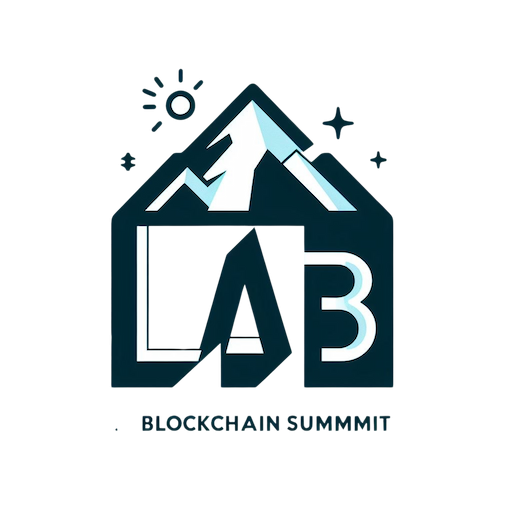
Did you know Solana can handle over 50,000 transactions per second? That’s more than Visa! This speed puts it miles ahead of many other blockchains, making it a game-changer in the crypto world.
Solana is a high-performance blockchain supporting fast and secure decentralized apps and crypto-currencies. It’s designed to solve some of the biggest issues plaguing older blockchains like Ethereum, such as slow transaction speeds and high fees.
If you’re into crypto or just curious about how blockchain tech can revolutionize industries, understanding Solana is crucial. Whether you’re worried about scalability or looking for investment opportunities, this platform offers solutions that might just address your concerns.
I first stumbled upon Solana while diving into crypto trends at a blockchain summit. Intrigued by its potential, I dug deeper and discovered its unique consensus mechanism. In this text, I’ll break down what makes Solana tick and how it could impact your future in the digital economy.
What Is Solana?
Solana’s a high-performance blockchain that can handle over 50,000 transactions per second. That’s way faster than older blockchains like Ethereum. So, what exactly makes Solana tick?
First off, Solana uses a unique consensus mechanism called Proof of History (PoH). Unlike traditional methods like Proof of Work (PoW), where miners solve complex puzzles, PoH creates a historical record that proves an event occurred at a specific moment in time. This makes the whole network super speedy and efficient.
Have you asked yourself why transaction fees on some blockchains are sky-high? Well, Solana tackles this with its efficient design, keeping costs low even during peak times. It’s kinda like taking the express lane on a highway without having to pay extra tolls.
And here’s something cool: Solana’s ecosystem is growing fast. New projects and decentralized apps (dApps) are popping up all the time. Developers love it ’cause it’s easy to build on and scales well.
But hey, nothing’s perfect. Some folks worry about centralization since a few big players hold most of the tokens. Yet, as more people join the network, this could change.
Curious about investing? Many see Solana as a solid option due to its tech advantages and growing adoption. But remember, crypto markets are volatile—always do your own research before diving in.
So there you have it! From its blazing speed to low fees and growing community, Solana offers lots for both developers and investors alike.
Key Features Of Solana
Solana’s got some really cool features that make it stand out. Let’s jump into a few of them.
High Transaction Speed
Solana is blazing fast. Unlike other blockchains, it can handle over 50,000 transactions per second (TPS). That’s way more than Bitcoin or Ethereum. Ever tried to buy something online and had to wait forever for the payment to go through? With Solana, you won’t have that problem. It processes transactions almost instantly. This speed makes it super attractive for developers building apps and services.
Low Transaction Costs
Nobody likes paying high fees, right? Well, one of Solana’s key perks is its low transaction costs. Even when there’s a lot of activity on the network, fees stay pretty low—usually just a fraction of a cent per transaction. Compare that with Ethereum where fees can skyrocket during busy periods; it’s clear why people are flocking to Solana. So if you’re tired of those hefty charges every time you move your crypto around, Solana might be just what you need.
Scalability
Scalability is another big win for Solana. As more people use blockchain tech for everything from finance to gaming, the networks get crowded and slow down. But not Solana—it scales effortlessly without compromising speed or cost efficiency. Think of it like adding more lanes to a highway; even during rush hour, traffic keeps flowing smoothly. This makes it perfect for large-scale applications and growing ecosystems.
Solana vs. Other Cryptocurrencies
Alright, so let’s get into how Solana stacks up against other big names in the crypto world.
Solana vs. Ethereum
Ethereum’s been around longer and is super popular for smart contracts and dApps. But it’s got high gas fees and slower transaction speeds. Solana, on the other hand, processes transactions way faster—about 50,000 per second compared to Ethereum’s 30-ish. Plus, transaction costs are just a fraction of a cent on Solana while they can be much higher on Ethereum. I mean, who doesn’t love saving money, right? But remember, Ethereum has a huge developer community which means lots of support and innovation.
Solana vs. Cardano
Cardano focuses heavily on research-driven development and aims to create a secure and scalable blockchain through peer-reviewed methods. While both platforms prioritize speed and low fees, Cardano emphasizes academic rigor in its development process more than any other blockchain project I’ve seen. But, when it comes to actual performance metrics like transactions per second (TPS), Cardano lags behind with about 250 TPS compared to Solana’s impressive 50,000 TPS. So if you’re looking for sheer speed and efficiency in daily operations, Solana might have the edge over Cardano.
Solana really shines with its Proof of History mechanism that enhances network efficiency by creating a historical record of events or transactions—something neither Ethereum nor Cardano does quite like this.
Use Cases Of Solana
Solana’s high performance and efficiency make it a versatile platform with various real-world applications. Let’s jump into some of the most exciting use cases.
DeFi Applications
Decentralized Finance (DeFi) is one of the hottest trends in crypto right now, and Solana’s making waves here. Imagine traditional banking but without the bank – that’s DeFi for you. On Solana, platforms like Serum offer lightning-fast trades and low fees, thanks to its unique Proof of History mechanism. Plus, it’s super scalable, so even if there’s a surge in users, the network doesn’t slow down.
NFTs
Non-Fungible Tokens (NFTs) are another big deal on Solana. Think digital collectibles or art pieces that you can own uniquely on the blockchain. Platforms like Metaplex allow artists to mint their NFTs at a fraction of the cost compared to Ethereum-based platforms. This makes it way more accessible for creators everywhere to get involved in the NFT craze without very costly.
Gaming Platforms
Gaming on blockchain? Yep, Solana’s got that covered too. Imagine playing your favorite game but earning real crypto while doing it – that’s what gaming platforms on Solana offer. Games like Star Atlas leverage Solana’s fast transaction speeds to provide seamless gameplay experiences. And because transactions are cheap and quick, players don’t get bogged down by delays or high costs when trading in-game assets.
Pros And Cons Of Solana
Solana’s got a lot going for it, but it’s not all sunshine and rainbows. Let’s break down the good and the bad.
Advantages
First off, speed is Solana’s jam. We’re talking over 50,000 transactions per second (TPS). That’s way faster than Ethereum’s 30 TPS or Cardano’s 250 TPS. Plus, transaction fees are super low—almost negligible compared to other blockchains.
Another big plus: scalability. Solana can handle more users without slowing down. So when there’s a surge in activity, you’re not stuck waiting around for your transaction to go through. Finally, its ecosystem is booming with new projects and dApps popping up all the time, offering endless opportunities for developers.
Disadvantages
But hey, nothing’s perfect. One major concern is centralization. A small number of players hold most of the tokens, which could lead to unequal power dynamics within the network.
Then there’s security concerns. Because it’s relatively new and evolving quickly, some folks worry about potential vulnerabilities that haven’t been fully tested yet. Also worth mentioning—the volatility of crypto markets affects Solana too; prices can swing wildly from day to day.
How To Buy And Store Solana
So, you’ve heard all the buzz about Solana and want to jump in? It’s a fantastic project with loads of potential. Let’s break down how you can buy and store it.
Purchasing Solana
First things first, you’ll need an account on a crypto exchange. Some popular ones are Binance, Coinbase, and Kraken. Once you’re set up there, search for Solana (SOL). You’ll find options to buy using various payment methods like credit cards or bank transfers. Just follow the prompts—they’ll usually guide you step-by-step through the process.
Here’s what I did: I signed up on Coinbase because it’s user-friendly and has solid security features. After verifying my identity (which is standard), I linked my bank account and bought some SOL directly. Easy-peasy!
Wallet Options
Now that you’ve got your SOL tokens, where do you keep them? You can leave them on the exchange, but that’s not always the safest bet. I’d recommend getting a digital wallet.
There are a couple of good choices here:
- Hardware Wallets: These are physical devices like Ledger Nano S or Trezor that store your crypto offline—super secure.
- Software Wallets: Apps like Phantom or Trust Wallet let you manage your SOL from your phone or computer.
I personally use Phantom because it’s specifically designed for Solana and integrates well with other dApps in its ecosystem. Plus, it’s straightforward to use even if you’re new to crypto wallets.
That’s pretty much it! Buying and storing Solana isn’t as complicated as it might seem at first glance.
Conclusion
Exploring Solana has been an eye-opener for me. Its speed and efficiency are game-changers in the blockchain space, making it a strong contender against Ethereum and Cardano. The unique Proof of History mechanism sets Solana apart, offering advantages that can’t be ignored.
I’ve found Solana’s ecosystem to be incredibly vibrant with endless possibilities in DeFi NFTs and gaming. It’s clear that developers are flocking to this platform for good reason. While there are concerns about centralization it’s worth keeping an eye on how things evolve.
For anyone diving into cryptocurrency investing or development Solana offers some exciting opportunities. Just remember to stay cautious given the volatility of the crypto market. Happy exploring!
